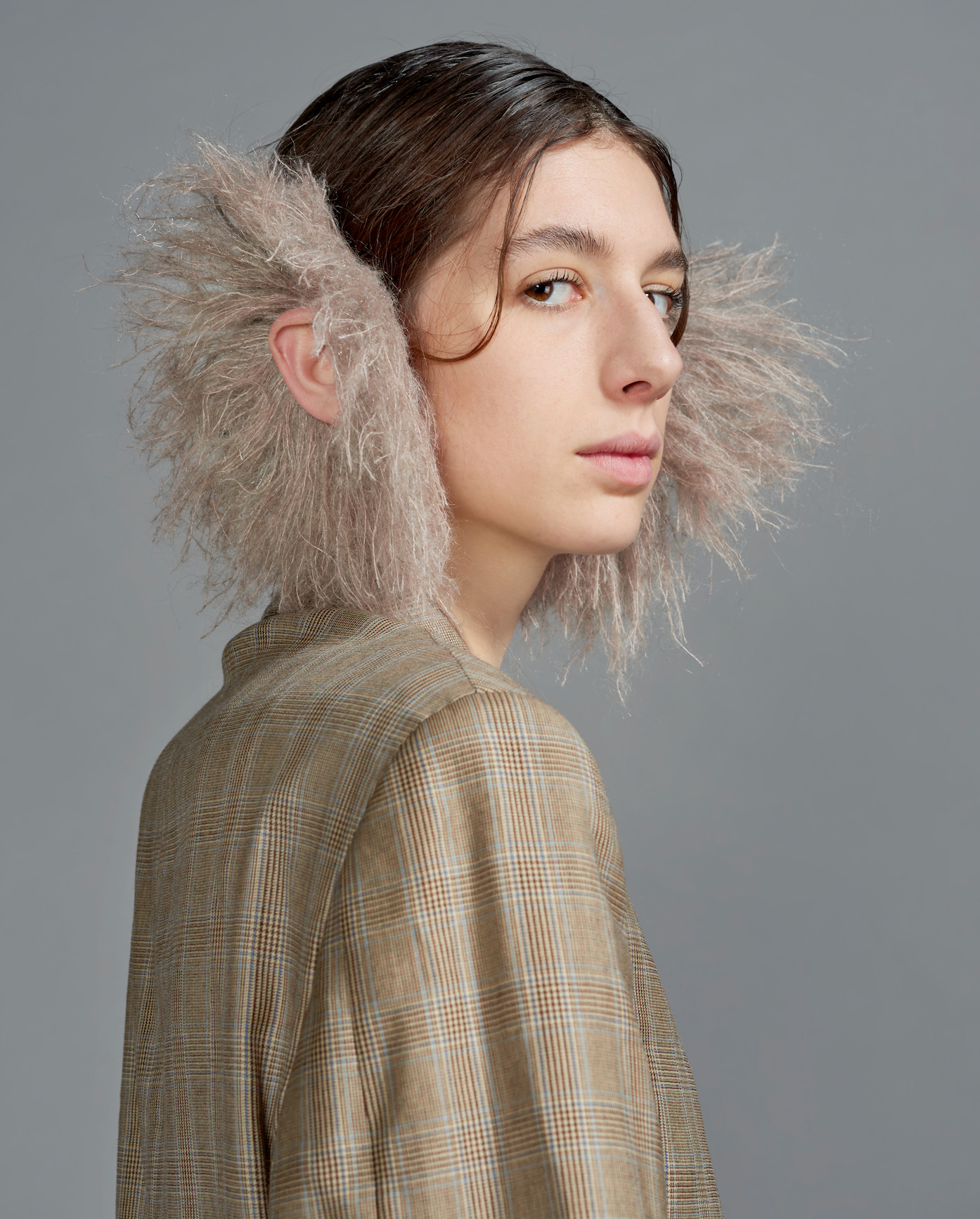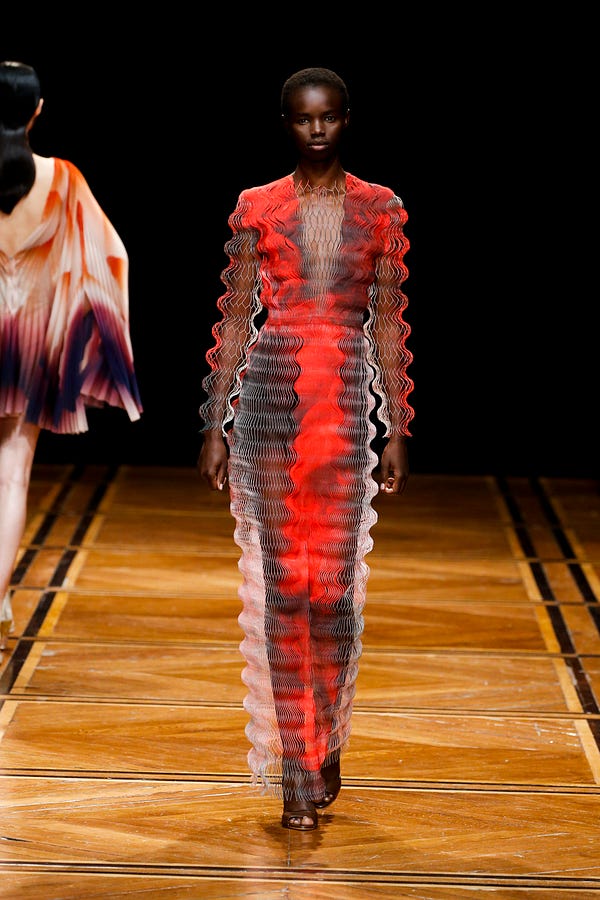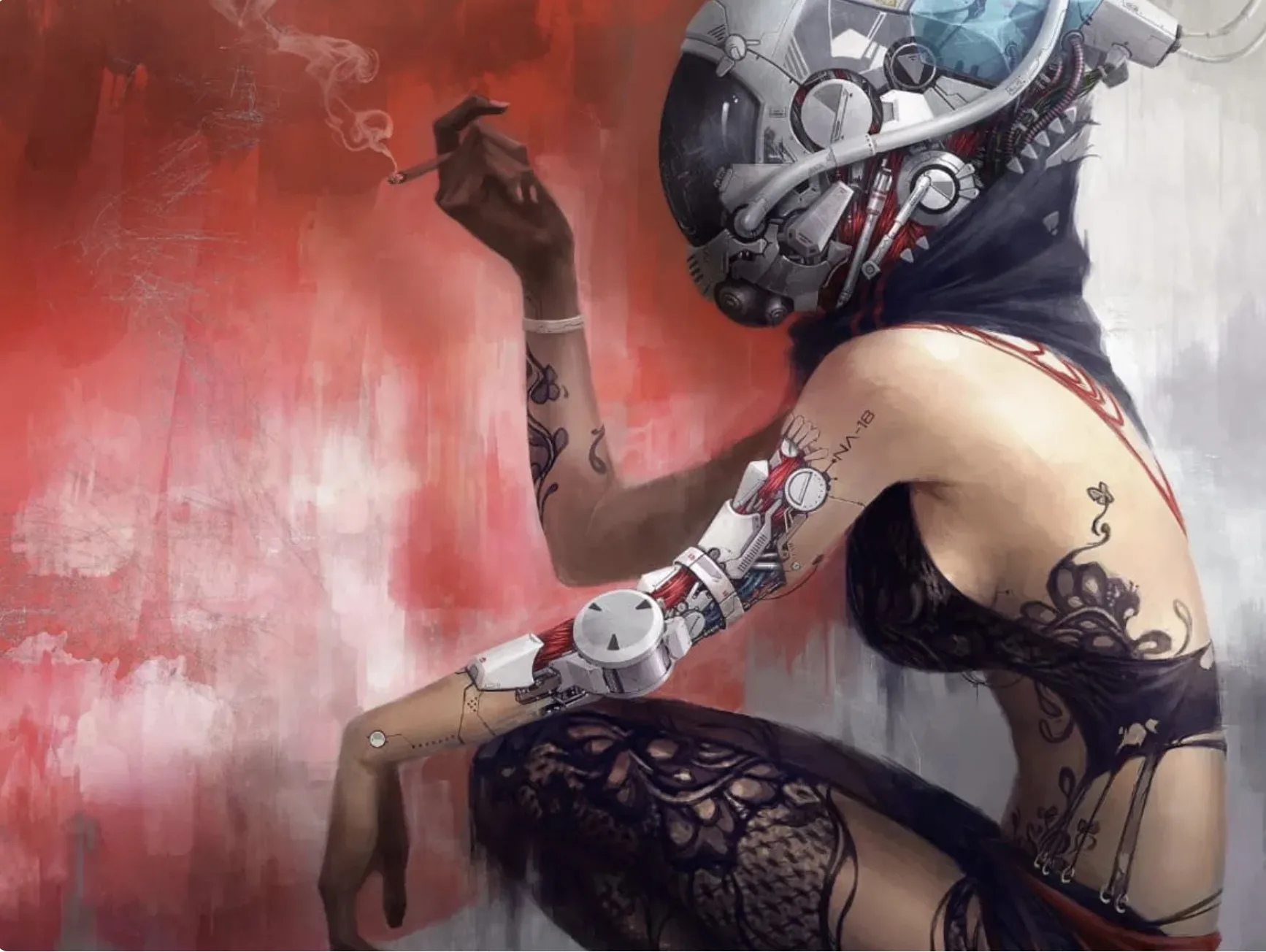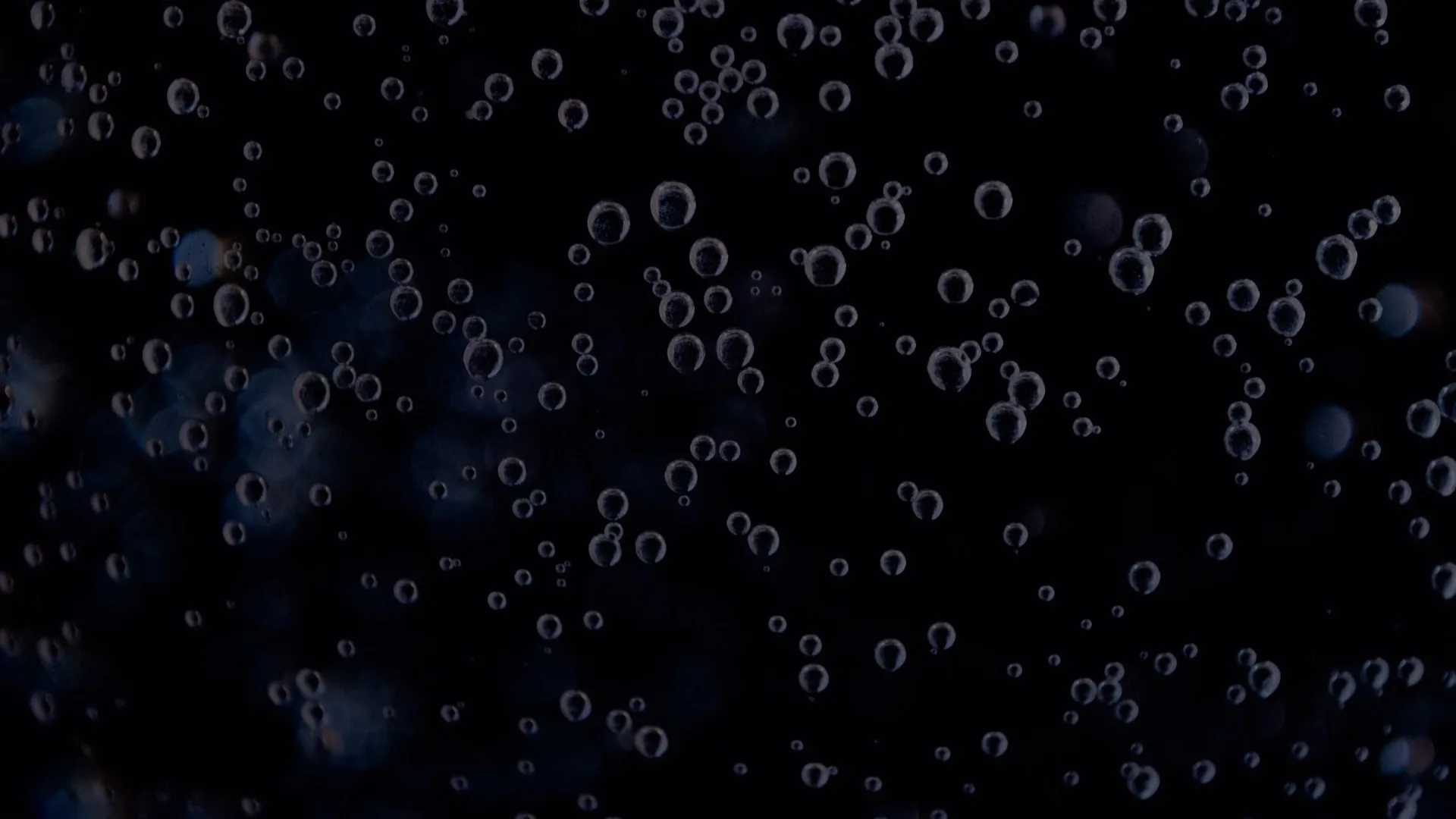
WEB SUMMIT 2021 HIGHLIGHTS
December 14, 2021
CELEBRATING GAMING CULTURE IN SIN CITY
December 22, 2021As life evolves, navigating through stress from our daily lives where climate change, coupled with economic and political uncertainty plays a big role, we are seeking to reconnect with nature in extraordinary ways. Animal behaviour and its relationship with man becomes something we as people are interested in and something we want to feel. It is humans’ innate need to affiliate with other life. Human-animal hybrids, an interspecies celebration, and human claws are things we seek for. We want to explore how we as individuals can include nature as part of our identity.
SHAPE SHIFTERS — human-animal hybrid fashion
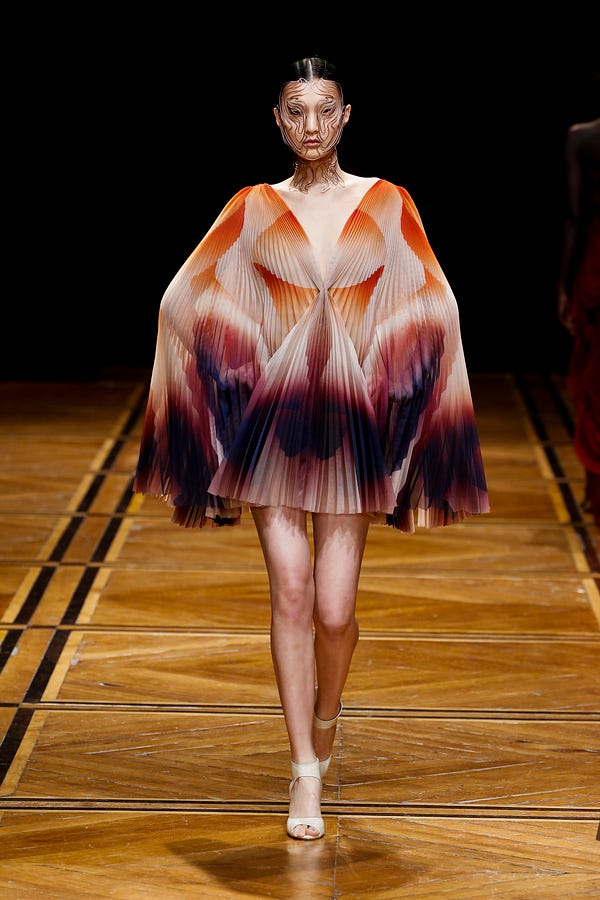
Iris van Herpen looked at advanced DNA engineering and the first successful creations of human-animal hybrids called ‘Cybrids’ for her sculptural couture collection ‘Shape Shifters’. ‘Cybrids’ are the mythological dreams of Humankind since the dawn of civilization and are shifting to the canvas of science. A Cybrid is a hybrid cell which, in this case, would be mixed with human and animal genes, which would cause human-animal embryos. While the scientific and ethical implications of ‘Cybrids are still unclear, this collection of van Herpen expresses the fact that this reality is upon us. Van Herpen thinks the subject of hybrid creatures is important given recent scientific breakthroughs in genetic engineering.
“For ‘Shift Souls’ I looked at the evolution of the human shape, it’s idealization through time and the hybridization of the female forms within mythology” said van Herpen. “Especially the imagination and the fluidity within identity change in Japanese mythology gave me the inspiration to explore the deeper meaning of identity and how immaterial and mutable it can become within the current coalescence of our digital bodies,” she explained.
Each of the 18 garments, which featured voluminous spheres, elaborately waved forms and laser-cut detailing, were inspired by human-animal hybrids. The collection’s warm colour palette ranged from shades of indigo and purple to ochre and yellow, and included prints that created optical illusions to “distort the body”.
WEAR WOLF — an interspecies celebration
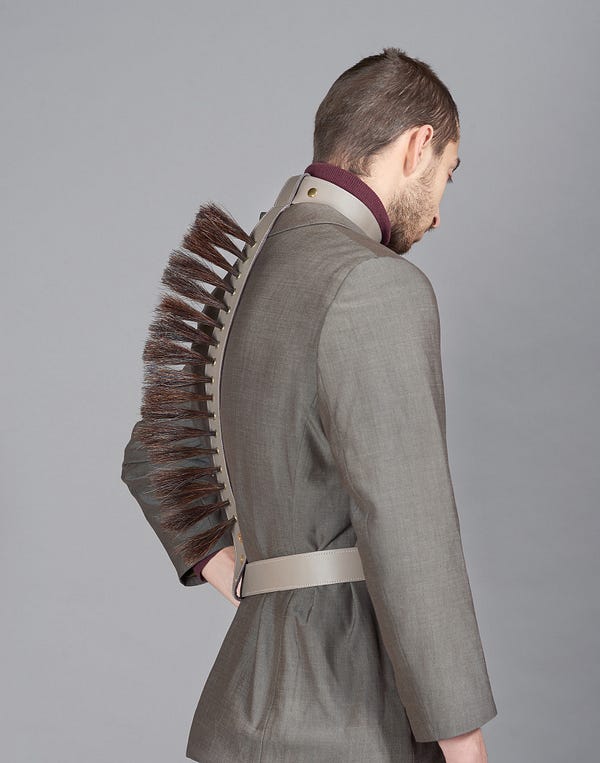
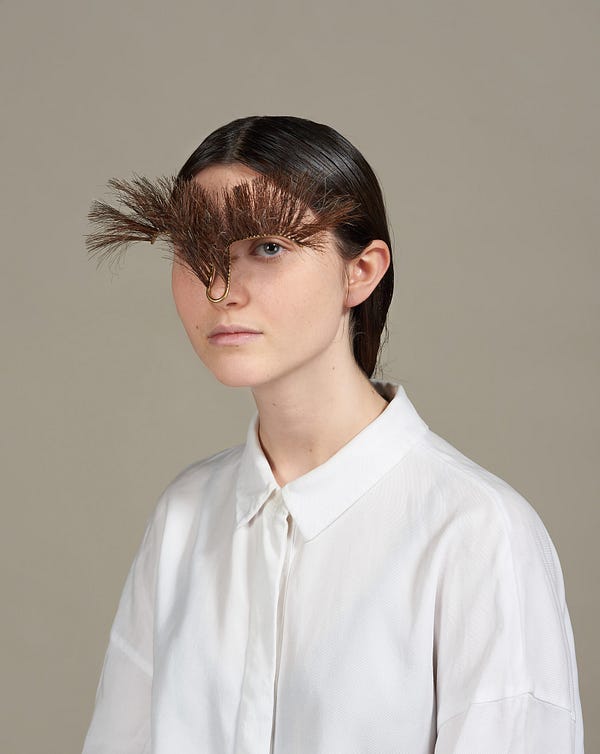
When I visited the Dutch Design Week last October, I came across the ‘WEAR WOLF’ collection by Lea Jenny and was fascinated. The collection was a part of the ‘Inhuman Carnaval’ exhibition, an interspecies celebration.
With Inhuman Carnival, DDW explored adding a new layer to the large-scale escapism that is common at carnival. Can you actively advocate for biodiversity and grow your understanding of non-human beings while you party? We believe that empathizing with a species and making a costume is a good starting point to become more aware of a large abstract problem, such as the loss of biodiversity.
The collection ‘WEAR WOLF’ is made by Lea Jenny, graduate of the design academy of Eindhoven. Over the years, she developed a multidisciplinary approach with a sensibility for cultural phenomena involving style and behaviours. The use of bright colours and irony in her designs invokes humour and joy, which are some of the main characteristics of her vision. Strong visuals attract Lea; she has refined her illustrative and digital skills due to her deep-rooted interest in graphic works.
About the work, she says: “The werewolf is a mythical animal of the night, an outcast roaming wild and free. But what about our own inner beast? ‘Wear Wolf’ is an open invitation to embrace our tameless temperament with no apologies for snarling our jaws. Displayed on the spine, ears, claws, chest or mouth, this set of scratchy jewellery, seductive weapons and intimidating ornaments becomes an extension of the body for a transformative experience.”
HUMAN CLAWS — inspired by an animal claw
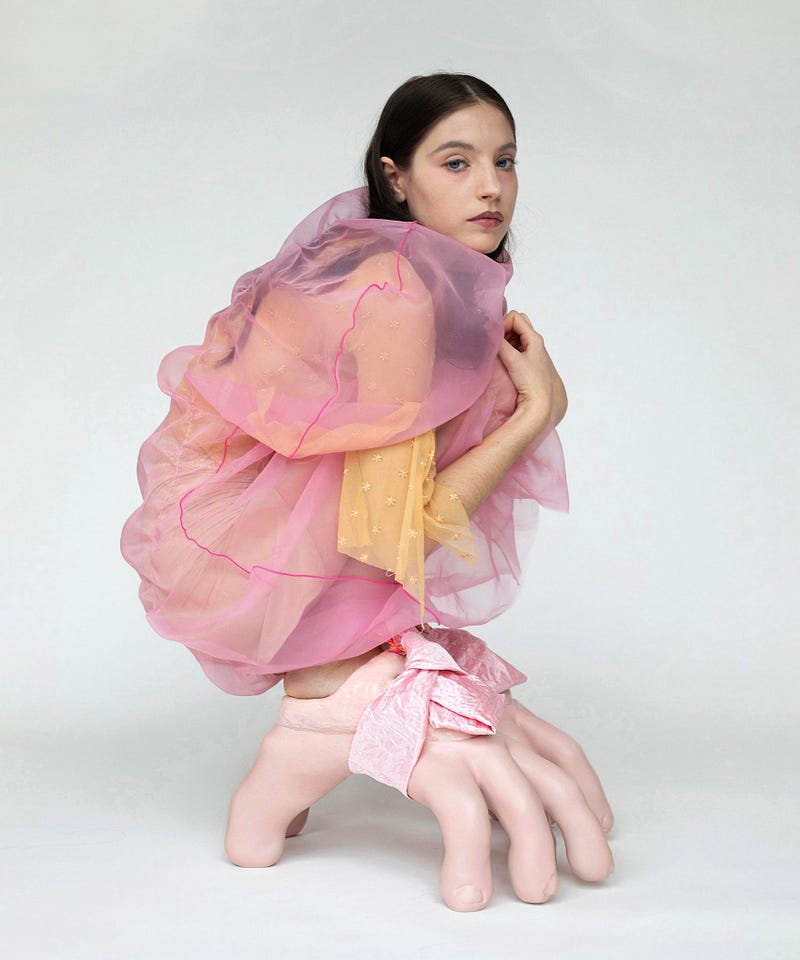
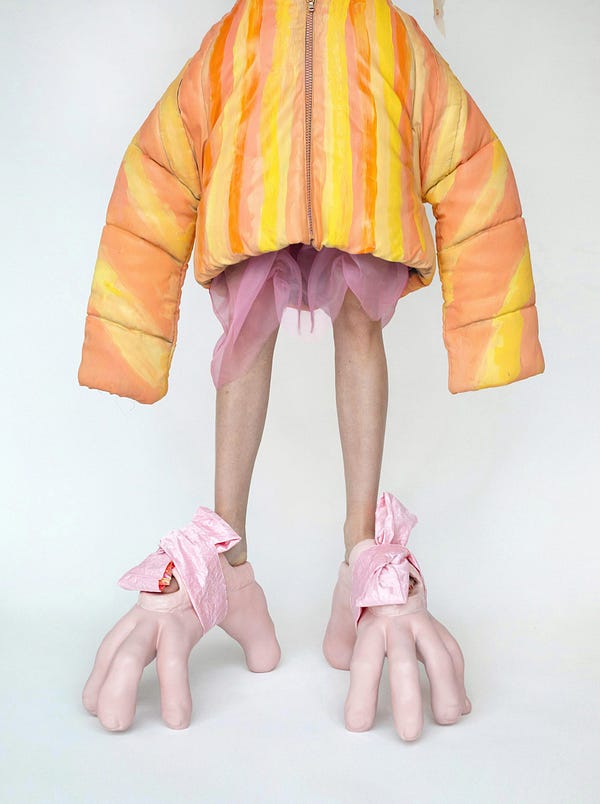
Swedish artist and designer Beate Karlsson takes literal shapes, like a hand, and distorts them until they are almost unrecognisable before turning them into a functional object. She is the self-professed ‘mother of silicone’ and uses the rubbery material to make shoes in the form of human claws in a bid to design never-before-seen items.
The Claw shoes, which have been 3D printed from a mixture of wood fibres and silicone, take the form of a giant human hand propped up on all four fingers and thumb in the gesture of an animal’s claw.
Straps moulded from silicone extend from the top of the shoe to form a sandal that the model can walk in, wearing the claws like stilts. Bows tied across the top of the shoes conceal the wearer’s foot to feed the illusion that they are extensions of their legs.
Karlsson describes her work as “fictional fashion”. Her intention, she said, is to create pieces that “belong in a future imaginary world where there are less norm-driven preconceptions”.
“I’ve been quite passive towards the fashion industry, as the value of design in many ways has been lost in my opinion,” said the artist. “I think I’m part of a group of young designers who feel that imitation has replaced innovation, much due to the consumer society.” The claw-shoes form part of Karlsson’s ongoing project titled X-treme Products, which has seen her create various wearable, tongue-in-cheek items for a hypothetical world determined by the idea of “otherness”.
“My biggest quest has been to seek otherness and actual innovation when I design,” she continued. “I’m not saying I am creating revolutionary pieces, but I strive to not create designs that are recognisable, since I think that’s what’s interesting about being a designer.”
“I hope it conveys something new and conscious and that it together with other young designers reshapes the landscape of the industry.”
“Silicone, for me is something I have always been passionate about handcrafting in clay,” she said. “For me, it’s the best way to communicate a three-dimensional design. You can get an exact shape and there are no limitations if you can master the craft yourself.” Silicone is amazing because you can make moulds from your clay figures, and it is a durable material,” she added. “So, it’s been great when crafting things like shoes that have to be flexible and strong.”
Why is this interesting as we look at society today?
Human-animal hybrid in contemporary society is about togetherness and feeling one with nature, or so called ‘Nature Connectedness’. Although we all are connected with nature from our very birth, today’s lifestyle is taking us away from it. Nature connectedness is the extent to which individuals include nature as part of their identity. It includes an understanding of nature and everything it is made up of. Feeling connected by the animal aspect of nature, can be understood through the concept of biophilia and the biophilia hypothesis. This term is defined as humans’ innate need to affiliate with other life such as plants and animals. This essentially means that humans have a desire to be near nature.
It is also about extraordinary escapism. As said by Studio Trend Forecast in November 2021; “We are living in a state of hyperreality. Navigating through stress from our daily lives — consisting of our offline and our parallel online lives — and the continuous stimuli from information and news from all over the world, lets us want to escape reality. The role of a social, shape shifting kind of world to escape in, is increasing psychological resilience. It gives us a sense of power, meaning, relativism and surrender.”
What can we expect from the future?
As we look at how interesting this is in today’s society, we see a lot going on as we talk about human-animal hybrids, an interspecies celebration and human claws. We see nature connectedness, biophilia hypothesis, and extraordinary escapism. It is all about feeling connected with nature and being away from the busyness of life. The future tells us that we want to explore how we as individuals can include nature as part of our identity. Environmental identity.
Sources
https://en.wikipedia.org/wiki/Cytoplasmic_hybrid

